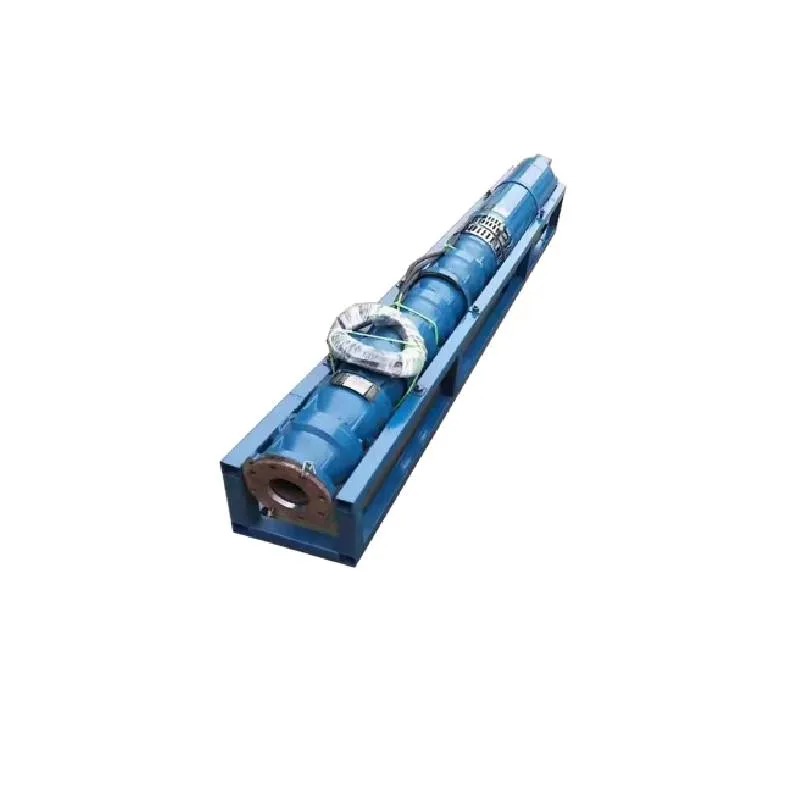Nov . 15, 2024 13:59 Back to list
installing a submersible well pump
Installing a Submersible Well Pump A Complete Guide
Submersible well pumps are a reliable and efficient solution for extracting water from deep underground sources. Ideal for residential, agricultural, or commercial applications, these pumps are designed to operate underwater and can be a great investment for anyone needing a dependable water supply. Installing a submersible well pump may seem daunting, but with proper preparation and guidance, you can complete the installation successfully. This article provides a step-by-step guide on how to install a submersible well pump.
Understanding Submersible Well Pumps
A submersible well pump consists of a sealed motor and a pump body that is submerged in the well. These pumps use a hydraulic system to push water to the surface, utilizing the pressure created by the pump to force it through the pipes. The main advantages of submersible pumps include their ability to work efficiently at significant depths and their quiet operation since they are located below the water level.
Preparing for Installation
1. Gathering Materials and Tools Before beginning the installation, ensure you have all the necessary materials. This typically includes the submersible pump, a discharge pipe, wiring, a power supply, check valves, and various fittings. Tools such as a wrench, pliers, a level, and a measuring tape will also be needed.
2. Safety Precautions Always prioritize safety. Make sure to wear protective gear, including gloves and goggles. Ensure that the power to the pump is turned off before starting the installation.
3. Assessing the Well Inspect the well’s condition, depth, and the amount of water it produces. It’s essential to choose a submersible pump that can handle the specific requirements of your well.
4. Checking Local Regulations Before proceeding with the installation, check with local regulations regarding well pump installations. Some areas may require permits or inspections, particularly for residential connections.
Step-by-Step Installation Process
installing a submersible well pump

1. Lowering the Pump Begin by attaching the discharge pipe to the pump. This pipe will carry water from the pump to the surface. Carefully lower the pump into the well, making sure it's upright and free of obstructions.
2. Wiring the Pump The electrical connections are crucial for the pump's operation. Make sure to follow the manufacturer’s guidelines for wiring, which often include connecting the pump's wires to a control box above ground. Seal all connections with waterproof material to prevent any moisture infiltration.
3. Check Valve Installation Install a check valve on the discharge pipe. This valve prevents backflow of water when the pump shuts off, helping to maintain prime and protect the equipment.
4. Setting the Pump at the Proper Depth The pump should be placed at an optimal depth, typically at least 10 feet below the water level but not so deep that it risks running dry. Using a measuring tape, ensure the pump is positioned at the correct height.
5. Connecting to Power Once everything is in place, connect the pump to the power source. Always ensure that the voltage matches the pump’s requirements and that the electrical system is properly grounded to prevent electrical hazards.
6. Testing the System After installation, turn the power back on and run the pump to test its functionality. Check for leaks at all connection points and make sure the flow of water is consistent and within expected levels.
Post-Installation Maintenance
After successfully installing your submersible well pump, regular maintenance is essential to ensure its longevity and efficient operation. Periodically inspect the system for any signs of wear or leaks, and clean the intake screen if necessary. Also, monitor the power supply to ensure stable operation.
Conclusion
Installing a submersible well pump may take some effort, but by following these steps, you can achieve a successful installation. By ensuring that the process is done correctly, you’ll have a reliable water source for years to come. If you feel uncomfortable performing the installation yourself, it’s always wise to consult or hire a professional to ensure that everything is set up safely and efficiently.
-
Submersible Water Pump: The Efficient 'Power Pioneer' of the Underwater World
NewsJul.01,2025
-
Submersible Pond Pump: The Hidden Guardian of Water Landscape Ecology
NewsJul.01,2025
-
Stainless Well Pump: A Reliable and Durable Pumping Main Force
NewsJul.01,2025
-
Stainless Steel Submersible Pump: An Efficient and Versatile Tool for Underwater Operations
NewsJul.01,2025
-
Deep Well Submersible Pump: An Efficient 'Sucker' of Groundwater Sources
NewsJul.01,2025
-
Deep Water Well Pump: An Efficient 'Sucker' of Groundwater Sources
NewsJul.01,2025
-
 Submersible Water Pump: The Efficient 'Power Pioneer' of the Underwater WorldIn the field of hydraulic equipment, the Submersible Water Pump has become the core equipment for underwater operations and water resource transportation due to its unique design and excellent performance.Detail
Submersible Water Pump: The Efficient 'Power Pioneer' of the Underwater WorldIn the field of hydraulic equipment, the Submersible Water Pump has become the core equipment for underwater operations and water resource transportation due to its unique design and excellent performance.Detail -
 Submersible Pond Pump: The Hidden Guardian of Water Landscape EcologyIn courtyard landscapes, ecological ponds, and even small-scale water conservancy projects, there is a silent yet indispensable equipment - the Submersible Pond Pump.Detail
Submersible Pond Pump: The Hidden Guardian of Water Landscape EcologyIn courtyard landscapes, ecological ponds, and even small-scale water conservancy projects, there is a silent yet indispensable equipment - the Submersible Pond Pump.Detail -
 Stainless Well Pump: A Reliable and Durable Pumping Main ForceIn the field of water resource transportation, Stainless Well Pump has become the core equipment for various pumping scenarios with its excellent performance and reliable quality.Detail
Stainless Well Pump: A Reliable and Durable Pumping Main ForceIn the field of water resource transportation, Stainless Well Pump has become the core equipment for various pumping scenarios with its excellent performance and reliable quality.Detail
